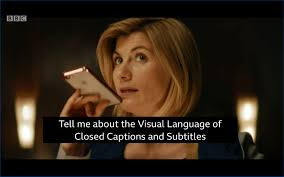
Dear Ms. Smartphone: I know there’s a lot of attention to the dynamic island on the new Apple phone but I just wanted to write and ask that you pay some love to other features. My adult sister and I have hearing loss and the new Live Captions will be a godsend. We use our phones a lot and a closed caption phone will help. I mention this because your readers might forget that a phone is more than a fashion accessory. Cheryl, San Rafael
Dear Cheryl: I appreciate your timely, and gentle reprimand. Accessibility has deep historical roots in telephony. Alexander Graham Bell, the inventor of the phone, envisioned his device as a means to help his deaf mother and the deaf girl he was courting. Text and other smartphone features we take for granted were initially designed to improve accessibility. Accessibility features should get more attention, alongside the “floating islands.” As you said, smartphones are indeed a godsend for those with a hearing loss, and vision loss as well.
Live Captions
The new Apple system you mention is called Live Captions. It lets users on Facetime turn on automatic captioning. As they dialogue, a caption will scroll across the top of the screen in real time.
This new captioning feature means that Facetime users will no longer need to add an intermediary to their conversations. Before this Apple users needed to bring in an AI transcription device or a helping human to turn the spoken words into text.
Captioning has actually been available on Android phones since 2019. Google has the most experience with captioning, since it has been integrated into the videos uploaded to YouTube for over ten years. However, Apple has not lagged far behind with its Siri functionality.
Amplification
BTW, the Live Captions feature is not restricted to deaf users, nor is it restricted to the newest phones. It can be also be found on Ipad and Macs that run newer software. You will find step by step directions here. And, you don’t have to have hearing loss to appreciate similar features. Sound amplifiers on the phone can be set to tune out background noise and bring more clarity to dialogues. You can pair the Apple or Google phones to your earphones or speakers, and, of course, to hearing aids.
You might have more experience with this than I do, but I have read that the high-resolution cameras on iPhones are very useful for people who rely on American Sign Language (ASL) since the syntax depends on using a mix of hand gestures and expansive visual cues. Front-facing cameras on phones and Ipads have helped deaf people dialogue with each other and thrive on Facebook and other hubs. Again, we need to look beyond our own uses and be grateful for the advances that get built because of accessibility needs.
More Accessibility
In this column I often rant against the pings and rings that distract us but not on this occasion. Visible alerts or vibration are vital for people with hearing loss. Many of them also work on connected watches so they are less distracting. On public transportation, if an announcement is made over the Public Address system and goes unheard, (e.g. fire, evacuate now) providers are required to send text (SMS alerts).
In closing, it turns out that there is a connection between the ‘island’ you mention and apps for the hard of hearing. Android phones originally offered a floating button for hard-of-hearing users to text into, and some said it looked like a Chat Head from earlier versions of Facebook. The Google island morphed into a simple dark gray text box with white text. Like the recent one, it can be resized and expanded. RRARRGH! Thanks for reminding us of our telephony roots.

Leave a Reply
You must be logged in to post a comment.